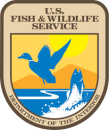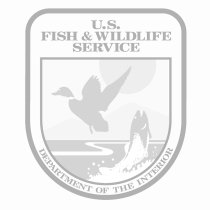Location
States
New MexicoEcosystem
River/streamIntroduction
The Rio Grande river, also known as the Rio Bravo, runs nearly 1,900 miles from the mountains of Colorado to the Gulf of Mexico. The Rio Grande Canalization Project (RGCP) is a flood control project spanning 105 miles of the Rio Grande in New Mexico and West Texas. In 2009, the United States Section of the International Boundary and Water Commission (USIBWC) committed to restoring over 550 acres of riparian riparian
Definition of riparian habitat or riparian areas.
Learn more about riparian habitat along the RGCP, including habitat for the endangered southwestern willow flycatcher (Empidonax traillii extimus) and other riparian-dependent species. The USIBWC and regional partners established the RGCP Environmental Water Transactions Program (EWTP) to acquire and lease water rights to secure water for restoration efforts.
Because water rights are distinct property rights and not tied to land, they can be transferred among users temporarily or permanently. Water transfers are voluntary agreements that change the type, time, or place of use of water and/or a water right. Water transfers can occur through sale, lease, or donation, and they can be used to move water among agricultural, municipal, industrial, energy, and environmental uses. Environmental water transactions are becoming an increasingly common strategy for conservation in the western United States where many rivers are overallocated and endangered species concerns and regulations can present conflicts between water users. Where the interests of conservation and agriculture conflict, market-base environmental water transactions often facilitate a win-win solution.
The USIBWC began drafting an Environmental Impact Statement in 1999 to assess alternatives for management and maintenance of the RGCP. In June 2009, the USIBWC issued a Record of Decision on River Management Alternatives for the Rio Grande Canalization Project (“ROD”). In the ROD, the USIBWC committed to establishing the administrative framework for environmental water transactions to support restoration. In addition to outlining measures for efficient water delivery and flood control, the ROD included recommendations from the U.S. Army Corps of Engineers (USACE) to prioritize 30 restoration sites totaling 550 acres along the RGCP. The ROD also committed the USIBWC to develop an Environmental Water Transaction Program (EWTP) that would be a voluntary, market-based program for the USIBWC to acquire or lease water rights in order to irrigate restoration sites, offset flow reductions resulting from human water use, or implement a high flow event to mimic the natural hydrograph and restore habitat.
In September 2011, the National Fish and Wildlife Foundation (NFWF) received funding from USIBWC in cooperation with the U.S. Fish and Wildlife Service (USFWS) to establish the Rio Grande Canalization Project EWTP. Audubon New Mexico worked closely with NFWF, USIBWC, USFWS and the Elephant Butte Irrigation District (EBID) to develop the essential framework for voluntary water transactions. Audubon assisted USIBWC in acquisition of 5.61 acres of EBID surface water rights in 2014 and completed the final ETWP report in March 2015. Since then, USIBWC acquired an additional 41.75 acres of surface water rights and is currently working on agreements for hundreds more acres of water rights.
Key Issues Addressed
Groundwater pumping, stream channel modifications, rising temperatures, and frequent droughts have led to a depletion of natural flows and loss of riparian habitats along the Rio Grande. Water is fully appropriated for farming or municipal uses, leaving little to none for natural river habitats. Water transactions focused on supporting water for the environment can help mimic natural flood regimes and provide needed moisture for existing and restored riparian habitats. In this project, partners worked out the details and logistics for using Rio Grande Project water to support habitat restoration along the RGCP. This involved US Bureau of Reclamation law, irrigation district policies, federal real property regulations, and on-the-ground infrastructure. Planting vegetation along the river could further deplete limited water, so the EWTP is meant to offset water depletions at restoration sites, garnering support from the agricultural community for the creation of habitat.
Project Goals
- Develop a framework for an environmental water transaction program
- Buy and/or lease enough water rights over a 10-year period to offset water use and provide supplemental irrigation for priority restoration sites
Project Highlights
- Restoration as Agriculture: The Bureau of Reclamation and EBID treat USIBWC like any other irrigator; USIBWC lands with water rights receive the same water allotment as other EBID irrigated lands, and share equally in shortages during low water years. Characterizing environmental water transfers as “agricultural use” allowed the use of Rio Grande water on restoration sites, per the Reclamation Act of 1902.
- Environmental and Agricultural Water Security: The 2012 USFWS Biological Opinion recognized that the EWTP benefited federally-listed threatened and endangered species in low water years. As a result of the collaboration among EBID, conservationists, and USIBWC on environmental water transactions, the RGCP was excluded from critical habitat designation for endangered flycatchers. This allowed EBID to participate in the EWTP as a voluntary, market-based transaction program to support riparian restoration while eliminating fears that farmers’ water would be taken in drier years to support endangered species. The updated USFWS Biological Opinion from 2017 increased the flexibility for USIBWC to determine irrigation priorities.
- Site Prioritization: USIBWC worked with USACE and stakeholders to identify, analyze, and prioritize restoration sites based on current conditions, geomorphology, and opportunities for floodplain inundation through enhanced river flows. USIBWC has used the resulting Conceptual Restoration Plan to implement feasible restoration sites along the entire 105-mile project reach.
- Identifying Sellers: USIBWC has used diverse strategies to find willing sellers of water rights. Those utilized to date include opportunistic sales by word of mouth, transfers of rights that were lost because water users had not paid water delivery fees, and discussions with municipal water rights holders.
- Early Success: The program acquired its first water rights from a private farmer in 2014, and theLeasburg Extension Lateral Wasteway #8 Restoration Site near Las Cruces, NM was the first restoration site irrigated using water rights established through the RGWTP. As detailed in a separate case study, water transactions effectively support restored riparian areas.
Lessons Learned
Just Add Water: Managed river systems like the RGCP can continue to provide important habitat for declining species. Environmental water rights will support over 500 acres, and nearly 90,000 native plants planted between 2011 and 2019.
Water delivery to the restoration sites through irrigation infrastructure is essential because the river is incised, groundwater is declining, and managed river flows do not resemble natural flow patterns. Using irrigation infrastructure to deliver water can mimic the effects of river-floodplain connectivity and can help support the creation or enhancement of endangered species habitat. River-dependent ecosystems can be resilient if environmental water rights are secured, supporting high biodiversity in otherwise arid landscapes.
Water rights are considered real property. Since the federal government was acquiring/leasing the water, the process had to adhere to federal laws and regulations for acquiring property.
Collaboration between irrigators and conservationists has been effective. Irrigation districts can identify and implement successful approaches to reallocate water for environmental benefit given water administrative constraints. Conservationists can identify restoration targets and determine environmental water requirements. Together, the two interest groups can garner the political support and will for implementation.
Farmers and conservationists can both benefit from integrated water management. Shared benefits include improved habitat for people and wildlife, water quality, channel restoration, and groundwater recharge/local water retention.
The water transfer program has been essential for supporting habitat restoration projects. From 2009-2018, the following accomplishments have been achieved at restoration sites along the RGCP:
- 22 sites underway (508 acres) 9 by USFWS and 13 by USIBWC environmental contractors
- Almost 66,000 trees and shrubs planted between 2011‐2018
- 500 acres of saltcedar cleared or treated
- 4 prescribed burns for saltcedar debris piles
- 55 shallow groundwater monitoring wells installed
- Monitoring protocol established
- Acquired almost 48 acres of EBID‐administered surface water rights
- A total of 5 sites were irrigated (the Leasburg Restoration site was irrigated 11 times, two more sites were irrigated several times for the first time in 2018, and additional infrastructure will be built to irrigate two additional sites in 2019).
Next Steps
- Secure the voluntary cooperation of the irrigation district in the Texas portion of the project area
- Continue planting about 25,000 trees and shrubs in 2019 and build additional irrigation infrastructure to irrigate additional sites
- Develop aquatic habitat restoration sites
- Purchase or lease additional water rights
- Complete a final report documenting activities completed under the 10-year Record of Decision
Funding Partners
United States Section of the International Boundary and Water Commission
Resources
- Related case study in CCAST: Irrigation of Riparian Habitat Restoration along the Rio Grande Canalization Project
- Rio Grande Canalization Project - Project Documentation
- Water Transaction Project Information
- Conceptual Restoration Plan and Cumulative Effects Analysis, Rio Grande—Caballo Dam to American Dam, New Mexico and Texas
- USFWS Biological Opinion
- Leasburg Restoration Site Joint Press Release 2014
- Restoration Overview Map
Contact
Elizabeth Verdecchia, Natural Resources Specialist, USIBWC: elizabeth.verdecchia@ibwc.gov
Case Study Lead Author
Ashlee Simpson, CART Graduate Research Assistant, University of Arizona
Suggested Citation
Simpson, A., C., and Grabau, M., R. (2018). “Rio Grande Environmental Water Transaction Program: Providing Water for Restoration.” CART. Retrieved from https://www.fws.gov/project/providing-water-restoration.







